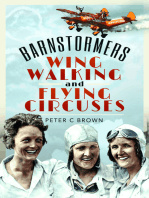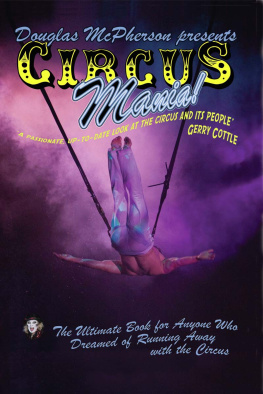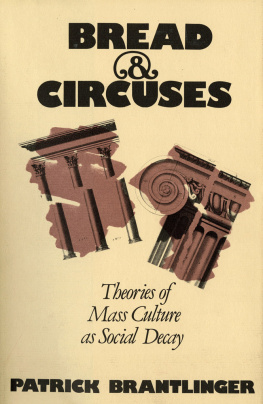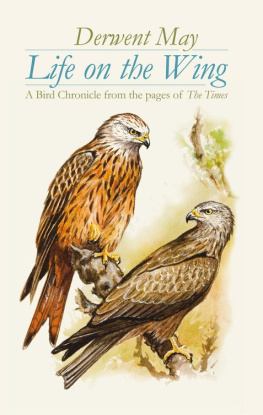Peter Brown - Barnstormers, Wing-Walking and Flying Circuses
Here you can read online Peter Brown - Barnstormers, Wing-Walking and Flying Circuses full text of the book (entire story) in english for free. Download pdf and epub, get meaning, cover and reviews about this ebook. genre: Non-fiction. Description of the work, (preface) as well as reviews are available. Best literature library LitArk.com created for fans of good reading and offers a wide selection of genres:
Romance novel
Science fiction
Adventure
Detective
Science
History
Home and family
Prose
Art
Politics
Computer
Non-fiction
Religion
Business
Children
Humor
Choose a favorite category and find really read worthwhile books. Enjoy immersion in the world of imagination, feel the emotions of the characters or learn something new for yourself, make an fascinating discovery.
- Book:Barnstormers, Wing-Walking and Flying Circuses
- Author:
- Genre:
- Rating:5 / 5
- Favourites:Add to favourites
- Your mark:
- 100
- 1
- 2
- 3
- 4
- 5
Barnstormers, Wing-Walking and Flying Circuses: summary, description and annotation
We offer to read an annotation, description, summary or preface (depends on what the author of the book "Barnstormers, Wing-Walking and Flying Circuses" wrote himself). If you haven't found the necessary information about the book — write in the comments, we will try to find it.
Barnstormers, Wing-Walking and Flying Circuses — read online for free the complete book (whole text) full work
Below is the text of the book, divided by pages. System saving the place of the last page read, allows you to conveniently read the book "Barnstormers, Wing-Walking and Flying Circuses" online for free, without having to search again every time where you left off. Put a bookmark, and you can go to the page where you finished reading at any time.
Font size:
Interval:
Bookmark:
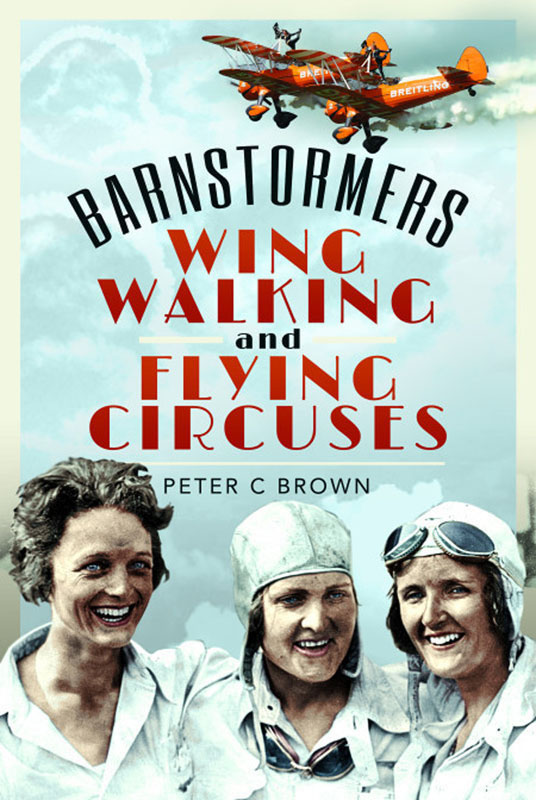
Barnstormers, Wing-Walking and Flying Circuses
Barnstormers, Wing-Walking and Flying Circuses
Peter C. Brown

First published in Great Britain in 2022 by
Pen & Sword Air World
An imprint of
Pen & Sword Books Ltd
Yorkshire Philadelphia
Copyright Peter C. Brown 2022
ISBN 978 1 52679 418 5
eISBN ISBN 978 1 52679 419 2
mobi ISBN 978 1 52679 419 2
The right of Peter C. Brown to be identified as Author of this work has been asserted by him in accordance with the Copyright, Designs and Patents Act 1988.
A CIP catalogue record for this book is available from the British Library.
All rights reserved. No part of this book may be reproduced or transmitted in any form or by any means, electronic or mechanical including photocopying, recording or by any information storage and retrieval system, without permission from the Publisher in writing.
Pen & Sword Books Limited incorporates the imprints of Atlas, Archaeology, Aviation, Discovery, Family History, Fiction, History, Maritime, Military, Military Classics, Politics, Select, Transport, True Crime, Air World, Frontline Publishing, Leo Cooper, Remember When, Seaforth Publishing, The Praetorian Press, Wharncliffe Local History, Wharncliffe Transport, Wharncliffe True Crime and White Owl.
For a complete list of Pen & Sword titles please contact
PEN & SWORD BOOKS LIMITED
47 Church Street, Barnsley, South Yorkshire, S70 2AS, England
E-mail: enquiries@pen-and-sword.co.uk
Website: www.pen-and-sword.co.uk
Or
PEN AND SWORD BOOKS
1950 Lawrence Rd, Havertown, PA 19083, USA
E-mail: Uspen-and-sword@casematepublishers.com
Website: www.penandswordbooks.com
Ihave used the word airplane to describe the machines that the early aviators used because it was first coined in 1906, about three years after the Wright brothers took to the air on the first successful flight with the flying machine. Little more than bolted and welded pieces of metal, wood and fabric, it was more than twenty years after the Wright brothers took flight that Charles Lindbergh became the first person to fly solo across the Atlantic non-stop, helping to cement airplane travel across the Atlantic and around the world. The word aero, although favoured in scientific jargon, was deemed too fancy, and planes became more common things to talk about. In Scientific American in 1906, there had already been a claim that air-plane was a much better word than aeroplane. Ten years later, airplane was adopted by the National Advisory Committee for Aeronautics as their term.
Airplanes were just coming into military use at the outset of the Great War, and while their impact on the course of the war was mainly tactical rather than strategic, most important being direct cooperation with ground forces especially ranging and correcting artillery fire the first steps in the strategic roles of aircraft in future wars was also foreshadowed. At the 1911 meeting of the Institute of International Law in Madrid, legislation was proposed to limit the use of airplanes to reconnaissance missions and banning them from being used as platforms for weapons. This legislation was rooted in a fear that airplanes would be used to attack undefended cities, violating Article 69 of the Den Hague Reglement (the set of international laws governing warfare).
However, the initial campaigns of 1914 proved that cavalry could no longer provide the reconnaissance expected by their generals, in the face of the greatly increased firepower of twentieth-century armies, and it was quickly realized that aircraft could at least locate the enemy, even if early air reconnaissance was hampered by the newness of the techniques involved.
Aviation was one of the most romanticized elements of the First World War. Air aces in particular achieved celebrity status both during and after the war and their photographs regularly appeared in newspapers. The French first coined the term ace to describe the high-scoring fighter pilot Adolphe Pgoud and the expression stuck, and then applied to any fighter pilot credited with shooting down five or more enemy aircraft. Lone aerial combat provided an outlet for acts of personal bravery, and the aces were seen as chivalrous heroes engaged in honest and impressive one-to-one fighting. However, the lives of air aces were often cut short through combat or because of mechanical failure. This only fuelled their status as heroic martyrs when they were killed in action between 1916 and 1918 or died in flying accidents during or after the war.
Many countries signed up to the proposal at the meeting in Madrid for banning the use of airplanes in war, except for the major countries that had aircraft just before the First World War, which in effect catalysed the development of the aircraft industry. Thus the plane became a full war machine with decisive influence on the modern battlefield.
At the start of the war, there was some debate over the usefulness of aircraft in warfare. Many senior officers, in particular, remained sceptical. However, aircraft were to prove their worth by mid-war and early scepticism and low expectations quickly turned to unrealistic demands beyond the capabilities of the primitive aircraft available.
Even so, air reconnaissance played a critical role in the war of movement of 1914, especially in helping the Allies halt the German invasion of France. On 22 August 1914, British Captain Lionel Evelyn Oswald Charlton and Lieutenant Vivian Hugh Nicholas Wadham reported that German General Alexander von Klucks army was preparing to surround the British Expeditionary Force (BEF), contradicting all other intelligence. The British High Command took note of the report and started to withdraw from Mons, thus saving the lives of 100,000 soldiers. Later, during the First Battle of the Marne, observation aircraft discovered weak points and exposed flanks in the German lines, allowing the Allies to take advantage of them.
In Germany, the great successes of the early Zeppelin airships had largely overshadowed the importance of heavier-than-air aircraft. Out of a paper strength of about 230 aircraft belonging to the army in August 1914 only 180 or so were of any use. The French military aviation exercises of 1911, 1912 and 1913 had pioneered cooperation with the cavalry (reconnaissance) and artillery (spotting), but the momentum was if anything slacking.
Great Britain had started late and initially relied largely on the French aircraft industry, especially for aircraft engines. The initial British contribution to the total Allied air war effort in August 1914 (of about 184 aircraft) was three squadrons with about thirty serviceable machines. By the end of the war, Great Britain had formed the worlds first air force independent of either army or naval control, the Royal Air Force. The American army and navy air services were far behind; even in 1917, when the United States entered the war, they were to be almost completely dependent on the French and British aircraft industries for combat aircraft. The Germans great air coup of 1914 was at the Battle of Tannenberg in East Prussia, where an unexpected Russian attack was reported by pilots Lieutenants Ernst Canter and Karl Mertens, resulting in the Russians being forced to withdraw.
Aerial reconnaissance using heavier-than-air machines was an entirely new science that had to be improvised step by step. Early operations were low-level flights with the pilot often dismounting from the plane to report verbally to the nearest officers. Photographic support was urgently developed, initially requiring a full-time photographer on board to handle the heavy, awkward equipment, and the interpretation of the resulting aerial images became an important new speciality, essential for accurate mapping. It would be 1917 before two-way air-to-ground radio would be in use for reconnaissance pilots, and until then, it was not uncommon for aircraft to land next to command posts so the pilot could personally pass on urgent information. The French employed airdropped messaging, coloured flares and prearranged aircraft manoeuvres to convey information.
Next pageFont size:
Interval:
Bookmark:
Similar books «Barnstormers, Wing-Walking and Flying Circuses»
Look at similar books to Barnstormers, Wing-Walking and Flying Circuses. We have selected literature similar in name and meaning in the hope of providing readers with more options to find new, interesting, not yet read works.
Discussion, reviews of the book Barnstormers, Wing-Walking and Flying Circuses and just readers' own opinions. Leave your comments, write what you think about the work, its meaning or the main characters. Specify what exactly you liked and what you didn't like, and why you think so.

